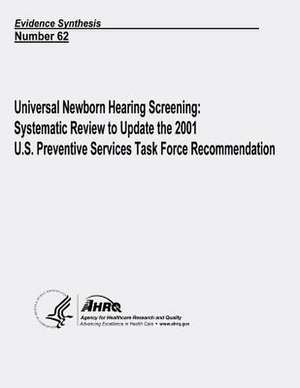Universal Newborn Hearing Screening
Autor U. S. Department of Heal Human Services, Agency for Healthcare Resea And Qualityen Limba Engleză Paperback
Preț: 104.12 lei
Preț vechi: 109.60 lei
-5% Nou
Puncte Express: 156
Preț estimativ în valută:
19.92€ • 20.80$ • 16.45£
19.92€ • 20.80$ • 16.45£
Carte disponibilă
Livrare economică 25 martie-08 aprilie
Preluare comenzi: 021 569.72.76
Specificații
ISBN-13: 9781490476971
ISBN-10: 1490476970
Pagini: 74
Dimensiuni: 216 x 280 x 4 mm
Greutate: 0.2 kg
Editura: CREATESPACE
ISBN-10: 1490476970
Pagini: 74
Dimensiuni: 216 x 280 x 4 mm
Greutate: 0.2 kg
Editura: CREATESPACE
